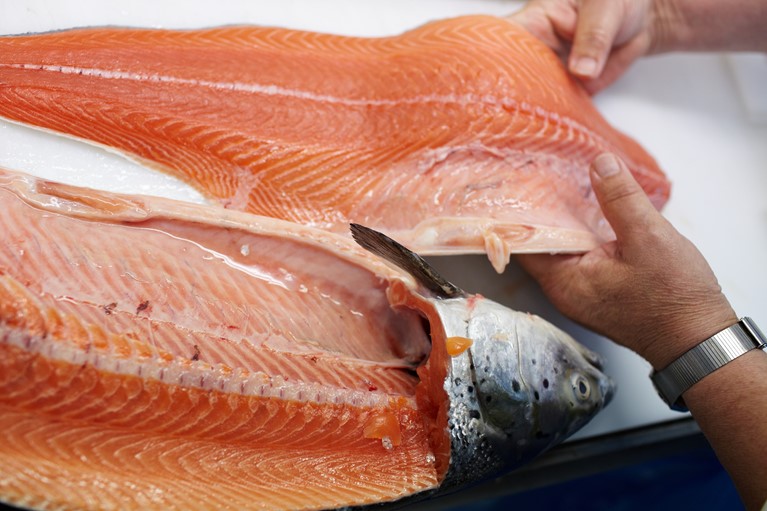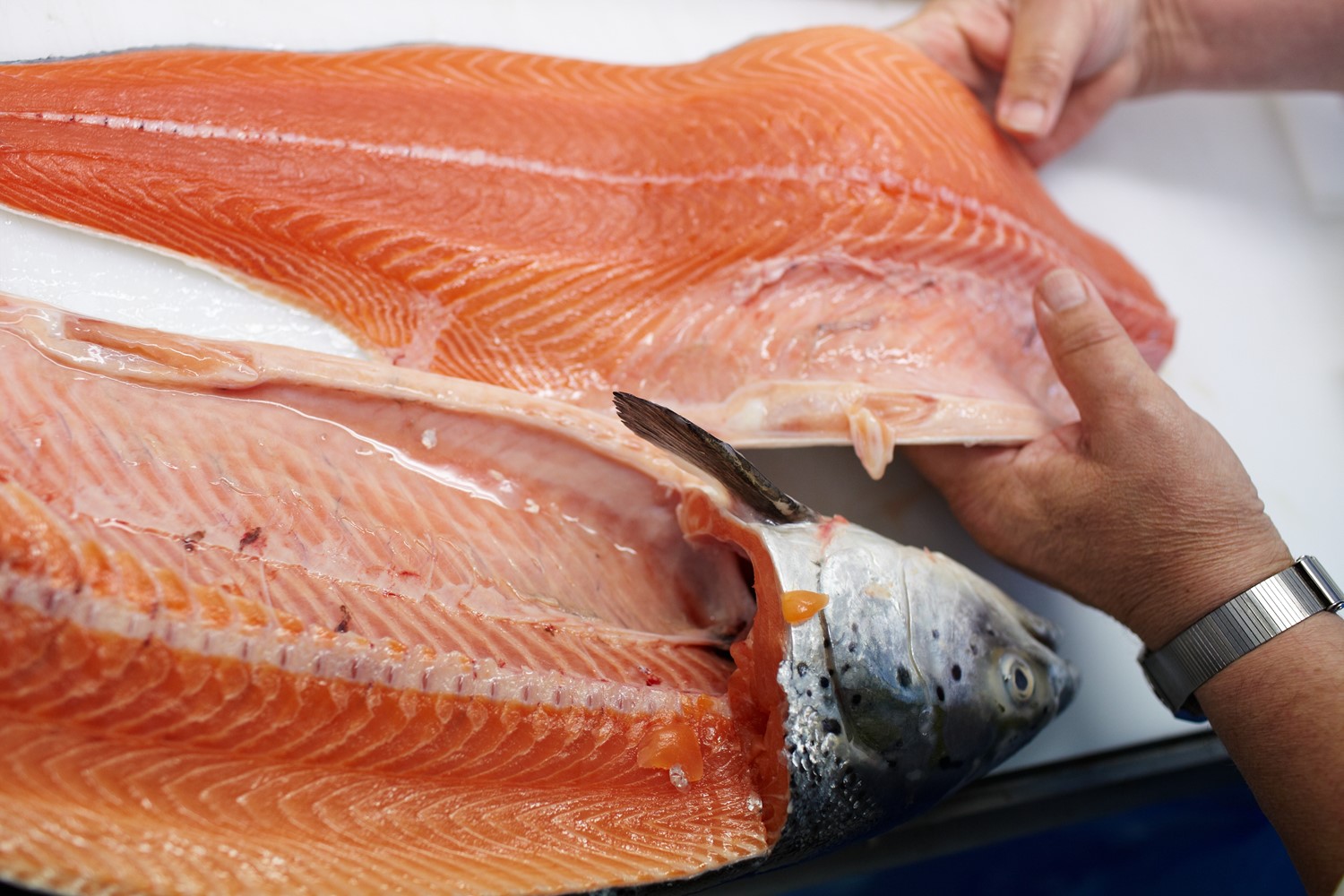Research: “Gaping” in salmon fillets is a phenomenon when connective tissue between the muscle layers is weakened, and gaps and slits appear in the fillet. It is quite uncertain exactly what happens to the connective tissue when it is no longer able to hold the muscle layers together.
Ása Jacobsen, researcher at P/F Fiskaaling, has just published a scientific article in the ACS Omega journal. Here, glycosaminoglycans in connective tissue with and without gaping are explained.
Glycosaminoglycans are very important for the composition and strength of the connective tissue. They are like chains of different length and have different amounts of sulphate groups. The length of the chains, as well as the amount and distribution of sulphate groups on the chains, give glycosaminoglycans different properties.
The article relates the meticulous studies of connective tissue glycosaminoglycan chains from salmon fillets. Comparisons are also made between connective tissue, that is intact and holds together the muscle layers, and connective tissue, that no longer holds together muscle layers.
The results demonstrate that there is a difference in the amount of sulphate groups on certain chains and that other chains have a different structure when the connective tissue is weakened. Possible causes of these changes are addressed, including which enzymes may contribute to this and where it may originate.
The test set-up for taking sample was conducted in collaboration with Hiddenfjord.
Co-authors of the article are Xiaofeng Shi, Chun Shao, Jonhard Eysturskarð, Svein-Ole Mikalsen og Joseph Zaia.


